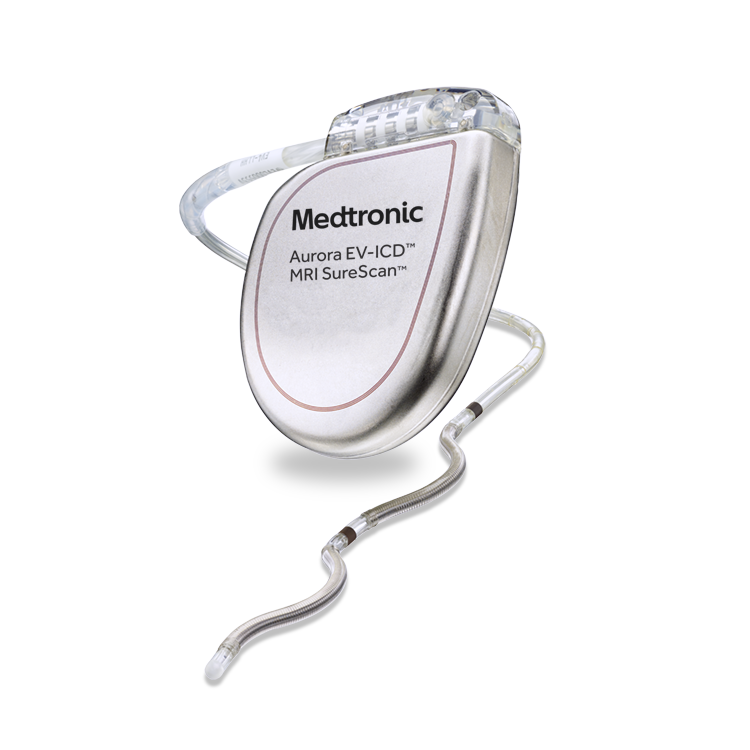The Aurora Extravascular ICD system is designed to treat dangerously fast heart rhythms that can lead to sudden cardiac arrest, while avoiding certain risks of traditional, transvenous ICDs because its lead is placed outside the heart and veins, under the breastbone using a minimally invasive approach.
On Nov. 14, 2023, 40-year-old James Norman became the first patient in Texas to receive the newly FDA-approved Aurora Extravascular Implantable Cardiac Defibrillator (EV-ICD) system. The clinical team at Baylor Scott & White Heart and Vascular Hospital – Fort Worth, led by Aleem Mughal, MD, FHRS, medical director of electrophysiology, and Anita Krueger, MD, FACS, medical director of the ECMO team, implanted the EV-ICD system in the Mineral Wells resident who was diagnosed with tachycardia.
Please call 817.825.1374 to refer a patient to the Heart Rhythm Center/Electrophysiology Department at Baylor Scott & White Heart and Vascular Hospital – Fort Worth
The Aurora system is designed to treat dangerously fast heart rhythms that can lead to sudden cardiac arrest, while avoiding certain risks of traditional, transvenous ICDs because its lead is placed outside the heart and veins, under the breastbone using a minimally invasive approach.

“The Aurora system allows us to offer patients in North Texas the benefits of traditional implantable cardiac defibrillators (ICDs), while reducing certain risks such as narrowing, blockage or compression of a vein, or blood infections, that can result from placing leads inside the heart or veins. Placing the lead outside is designed to help avoid these long-term complications,” Dr. Mughal explained. “The Aurora EV-ICD allows us to provide ICD therapy to patients who have limited vascular access or who are younger where preservation of the vasculature may be desired. It provides anti-tachycardia pacing and a battery longevity of about 10 years. The bottom line is the Aurora system allows us to tailor the best therapy for an individual patient.”
The Aurora system was positioned under Norman’s left armpit with a thin lead wire placed just under his sternum, outside of his heart and veins, to deliver a rhythm-regulating shock if needed. Because the lead is placed close to the heart, the energy required for pacing and defibrillation is lower than if it were further away and separated from the heart by bone. The Aurora system provides features available in a transvenous ICD system including anti-tachycardia pacing (ATP), small size (33 cm), a decade or more of longevity, pause prevention pacing (backup bradycardia pacing), programmable VF detection intervals and multiple therapy zones, and a monitor zone which allows for documentation of slow VTs, including non-sustained VTs.







